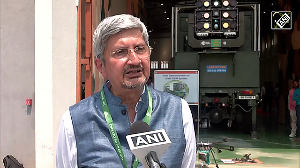An oft-voiced concern in countries introducing value-added tax is that the introduction of the tax would set in motion a spiral in which tax, prices and wages would feed on each other -- that is, VAT would be inflationary.
If the inflationary impact is taken to mean a sustained increase in the rate of inflation then the concern would be conceptually misguided. The introduction of VAT, or any tax for that matter, can never, by itself, lead to a sustained increase in the rate of change in the price level.
Such a change in the inflation rate can only be produced by an expansionary monetary policy under all circumstances. If, however, the term is interpreted as an increase in the price level (or a one-period increase in the inflation rate), then whether VAT is inflationary in this sense would depend on a number of factors.
The Crisis Over VAT: Complete Coverage
Consider, some examples of VAT in other countries. After VAT was first introduced, a survey was conducted by Alan S Tait on its impact in several countries on the basis of International Monetary Fund data, which shows that VAT is never introduced in isolation.
There are a number of variables influencing price change, and therefore, it is difficult to empirically assess the effect of VAT on prices. The impact of VAT on prices, therefore, cannot be strictly segregated from the general trend in inflation. First, the taxes that have been replaced are also relevant. They could be a wholesale sales tax of the cascading type, a simpler VAT, a multistage ring system, a cascade production tax and so on.
Second, the design to yield equal or higher revenue also makes a difference.
Third, other concurrent changes such as rise in oil or steel prices in international and internal markets, increase in utility rates, changes in wage levels, administrative changes such as tighter monetary policy, price control, monitoring of prices and so on, make due impact on the price rise.
According to the survey, in 22 countries, no major impact on the consumer price index was identified.
In another eight, the introduction of VAT was associated with a highly defined once and for all shift in the consumer price index; only in one of these cases it could be said to have accelerated the rate of increase of the consumer price index.
In seven other cases, although the shift was permanent there was no acceleration in the rate of change in prices attributable to VAT.
Therefore, in 29 cases (22 plus seven) -- 83 per cent of the total sample -- the introduction of VAT did not alter the rate of price change.
Price control measures can be used effectively to dampen the potential price-wage acceleration of inflation after the introduction of VAT -- some good examples are Austria, France, Korea, Norway and the Netherlands.
Perhaps the most important conclusion of the survey is that there seems to be nothing inherently inflationary about the use of VAT. In 33 out of 41 cases reviewed -- over 80 per cent -- (the "shift" cases and the "little or no effect" cases), VAT was not a contributory factor to inflation.
There is another empirical study on the Netherlands on the issue of price rise. The Central Planning Bureau in the Netherlands calculated the price effect of VAT from 1969 to 1980.
While VAT was introduced in the country in 1970, the study goes up to 1980 and the trend in price rise due to VAT can clearly be seen as insignificant, or none at all.
In Indonesia, there were widespread apprehensions of substantial price rise before VAT was introduced in April 1985. However, in practice nothing like that happened.
In fact, price indexes for consumer products fell slightly in the first week after adoption of VAT, and domestic inflation for the subsequent year was well below that for the previous year.
It is evident from the discussion that inflation had not surfaced in the countries under the study, which cover a cross section of countries from the world over, because of VAT alone.
There may be a minor one-shot increase or once and for all impact to begin with under certain circumstances due to replacing other taxes and consequent adjustments by the traders and also because the overall number of tax payers would increase, but the crucial question is whether this one time increase would lead to further price escalation.
There would be offsetting price effects because of the elimination of the cascading tax. The media has reported that some sellers of consumer durable goods have said that the 12.5 per cent rate is higher than the previous one.
They are suppressing the fact that now the manufacturers shall be getting input credit for the sales tax paid on the raw materials and machinery.
Moreover, 4 per cent is lower than most of the existing rates. So the overall VAT rate will prove to be the same as the effective rate prevailing before.
The net price effect of VAT would be nil. If the VAT is an equal-yield tax, and that is how it has been designed to be in India, there would not be any effect on the overall price change, although there may be changes in relative prices.
The tax being revenue neutral, the aggregate demand is unchanged and so there would be no impact on the aggregate price level. There is unanimity among the economists all over the world that there seems to be nothing inherently inflationary about the use of VAT.
Thus, this brings us to another aspect related to VAT administration, that is, the potentially inflationary effect can be constrained by government policies to inform the public and traders about the expected effect of VAT on prices, the use of price controls, monitoring of prices, offsetting adjustment in other taxes and generous provisions to ensure full credit for previously paid taxes on inputs.
One can criticise VAT for other reasons, but it cannot be called inflationary.







 © 2025
© 2025